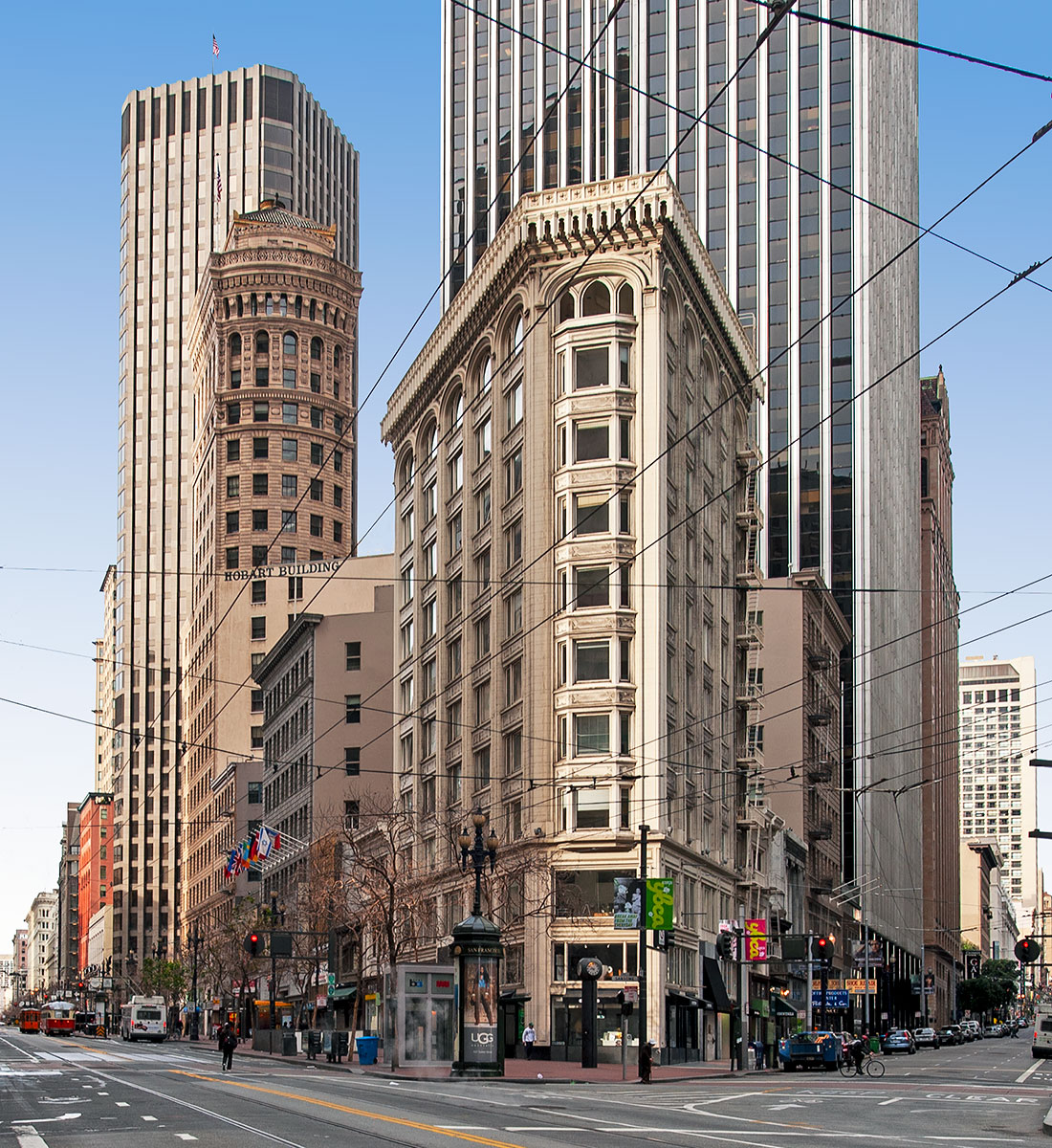San Francisco Landmarks
Flatiron Building
540-548 Market Street At Sutter
Built 1913
The Flatiron Building, designed by Havens & Toepke, is one of the few, and most distinctive flatirons on Market Street. Flatirons were common north of Market both before and after the 1906 Earthquake and Fire, but the destruction of such outstanding structures as the 1892 Crocker Building at Post and Market for high-rises and plazas has made the form rare.
The skeletal structure of the building is well-adapted to an unusual (for San Francisco) Gothic treatment in which tripartite bays are separated by thin piers of reinforced concrete scored to imitate masonry. A highly distinctive cantilevered cornice of Gothic pendants appears to be a prototype for Willis Polk's 1917 Hallidie Building one block west. Described in 1913 as "pure English Gothic," the medieval ornament also is used for interior railings, grilles, and elevator doors.
The Flatiron Building (backed by the Hobart Building) is made all the more prominent by adjacent Zellerbach Plaza while its northern frontage defines the ends of both Sutter and Sansome Streets. It contributes stronglY to a richly textured and detailed historic enclave around the northern and western sides of Zellerbach Plaza.
Adapted from San Francisco Landmarks Preservation Advisory Board Final Case Report dated 16 December 1981

Flatiron buildings are among the earliest skyscrapers erected in North American cities such as New York City, Chicago, San Francisco, Chattanooga, Fort Worth, Atlanta, Toronto and Vancouver. Their triangular shape was determined by real estate parcels created by diagonal streets, such as Broadway in Manhattan and Market in San Francisco, slicing through an urban grid. They were named for their resemblance to clothes irons of the period.
The most famous flatiron building is the Fuller Building, generally regarded as New York City's first skyscraper. It was designed by Daniel H. Burnham, built in 1902, famously photographed by Edward Steichen, and perhaps responsible for the Jazz Age terms 23 skidoo and scram.
